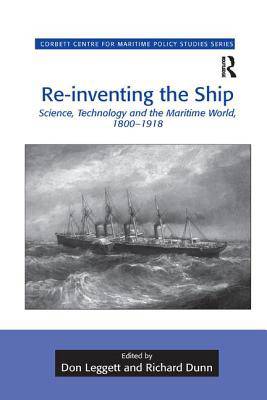
Door een staking bij bpost kan je online bestelling op dit moment iets langer onderweg zijn dan voorzien. Dringend iets nodig? Onze winkels ontvangen jou met open armen!
- Afhalen na 1 uur in een winkel met voorraad
- Gratis thuislevering in België vanaf € 30
- Ruim aanbod met 7 miljoen producten
Door een staking bij bpost kan je online bestelling op dit moment iets langer onderweg zijn dan voorzien. Dringend iets nodig? Onze winkels ontvangen jou met open armen!
- Afhalen na 1 uur in een winkel met voorraad
- Gratis thuislevering in België vanaf € 30
- Ruim aanbod met 7 miljoen producten
Zoeken
€ 102,45
+ 204 punten
Uitvoering
Omschrijving
Ships have histories that are interwoven with the human fabric of the maritime world. In the long nineteenth century these histories revolved around the re-invention of these once familiar objects in a period in which Britain became a major maritime power. This multi-disciplinary volume deploys different historical, geographical, cultural and literary perspectives to examine this transformation and to offer a series of interconnected considerations of maritime technology and culture in a period of significant and lasting change. Its ten authors reveal the processes involved through the eyes and hands of a range of actors, including naval architects, dockyard workers, commercial shipowners and Navy officers. By locating the ship's re-invention within the contexts of builders, owners and users, they illustrate the ways in which material elements, as well as scientific, artisan and seafaring ideas and practices, were bound together in the construction of ships' complex identities.
Specificaties
Betrokkenen
- Auteur(s):
- Uitgeverij:
Inhoud
- Aantal bladzijden:
- 240
- Taal:
- Engels
- Reeks:
Eigenschappen
- Productcode (EAN):
- 9781138261051
- Verschijningsdatum:
- 23/11/2016
- Uitvoering:
- Paperback
- Formaat:
- Trade paperback (VS)
- Afmetingen:
- 156 mm x 234 mm
- Gewicht:
- 344 g

Alleen bij Standaard Boekhandel
+ 204 punten op je klantenkaart van Standaard Boekhandel
Beoordelingen
We publiceren alleen reviews die voldoen aan de voorwaarden voor reviews. Bekijk onze voorwaarden voor reviews.











